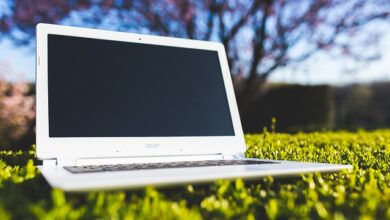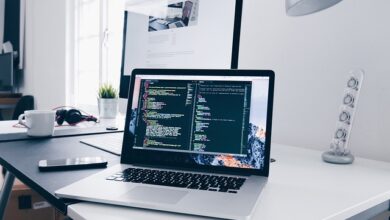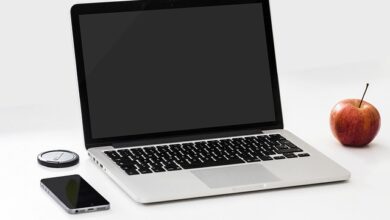Best Ways to Optimize Your Smartphone for Faster Performance

Smartphones have become indispensable tools in our daily lives, serving as communication devices, entertainment hubs, and productivity assistants. However, over time, even the most advanced smartphones can slow down due to heavy usage, accumulated clutter, or outdated software. To ensure your device runs smoothly and efficiently, it’s essential to optimize its performance regularly. In this article, we’ll explore the best ways to boost your smartphone’s speed and responsiveness.
Introduction
A sluggish smartphone can be frustrating, especially when you rely on it for work, communication, and entertainment. Whether you’re using an Android device or an iPhone, optimizing your smartphone’s performance doesn’t require technical expertise. With a few simple steps, you can breathe new life into your device and enjoy faster speeds without needing to upgrade.
Why Does a Smartphone Slow Down?
Before diving into optimization techniques, it’s important to understand why smartphones tend to slow down over time:
- Accumulated Cache : Temporary files stored by apps can take up space and slow down performance.
- Too Many Apps : Installing too many apps consumes system resources and storage.
- Outdated Software : Older versions of operating systems and apps may not run efficiently on newer hardware.
- Background Processes : Apps running in the background consume RAM and CPU power.
- Storage Overload : A full storage drive reduces read/write speeds, affecting overall performance.
- Battery Degradation : Aging batteries may struggle to deliver consistent power, impacting performance.
Now that we know the common culprits, let’s explore how to address them.
Best Ways to Optimize Your Smartphone
1. Clear Cache and Junk Files
What It Does:
Apps store temporary data (cache) to load faster during subsequent use. Over time, this cache can accumulate and slow down your device.
How to Fix:
- Android : Go to Settings > Storage > Cached Data , then tap “Clear.”
- iPhone : There’s no direct way to clear app cache on iOS, but deleting and reinstalling problematic apps can help.
You can also use third-party cleaning apps like CCleaner (for Android) to remove junk files.
2. Uninstall Unused Apps
What It Does:
Unused apps occupy valuable storage space and may run background processes unnecessarily.
How to Fix:
- Android : Go to Settings > Apps > See All Apps , select the app, and choose “Uninstall.”
- iPhone : Press and hold the app icon, then select “Remove App.”
Regularly review your installed apps and remove those you no longer need.
3. Disable Bloatware
What It Does:
Pre-installed apps (bloatware) often come with smartphones and cannot be uninstalled. These apps can still run in the background and consume resources.
How to Fix:
- Android : Go to Settings > Apps , find the bloatware app, and select “Disable.”
- iPhone : Unfortunately, iOS does not allow disabling pre-installed apps, but you can hide them in folders.
4. Update Your Operating System and Apps
What It Does:
Software updates include performance improvements, bug fixes, and security patches that keep your device running smoothly.
How to Fix:
- Android : Go to Settings > System > Software Update .
- iPhone : Go to Settings > General > Software Update .
Enable automatic updates to ensure your device always has the latest version.
5. Manage Background Processes
What It Does:
Some apps continue running in the background, consuming memory and battery life.
How to Fix:
- Android : Go to Settings > Battery & Device Care > Battery Usage , and restrict background activity for unnecessary apps.
- iPhone : Go to Settings > Battery , identify apps using excessive resources, and adjust their settings.
You can also manually close unused apps from the multitasking menu.
6. Use Lightweight Alternatives
What It Does:
Heavy apps consume more resources than necessary. Switching to lightweight alternatives can significantly improve performance.
Examples:
- Replace Google Chrome with Firefox Lite or Opera Mini for browsing.
- Use Microsoft Office Mobile instead of desktop-grade office suites.
7. Free Up Storage Space
What It Does:
Low storage affects performance because the device struggles to manage files and data efficiently.
How to Fix:
- Delete old photos, videos, and documents.
- Move large files to cloud storage services like Google Drive or iCloud.
- Use built-in storage management tools:
- Android : Go to Settings > Storage > Free Up Space .
- iPhone : Go to Settings > General > iPhone Storage .
8. Reset App Preferences
What It Does:
Resetting app preferences clears default settings and permissions, which can resolve issues caused by misconfigured apps.
How to Fix:
- Android : Go to Settings > Apps > Reset App Preferences .
- iPhone : There’s no direct option, but resetting all settings (Settings > General > Transfer or Reset iPhone > Reset All Settings ) achieves a similar effect.
9. Factory Reset (Last Resort)
What It Does:
A factory reset restores your phone to its original state, removing all data and settings. This is a drastic measure but highly effective.
How to Fix:
- Android : Go to Settings > System > Reset Options > Erase All Data .
- iPhone : Go to Settings > General > Transfer or Reset iPhone > Erase All Content and Settings .
Back up your data before proceeding.
Additional Tips for Long-Term Optimization
To maintain optimal performance over time, consider these ongoing practices:
- Limit Widgets and Animations : Reduce visual effects and unnecessary widgets to save processing power.
- Use a Reliable Antivirus App : Protect your device from malware that could slow it down.
- Charge Properly : Avoid overcharging and use certified chargers to prolong battery health.
- Monitor Temperature : Keep your phone cool to prevent thermal throttling.
- Avoid Jailbreaking/Rooting : Modifying your OS can lead to instability and reduced performance.




